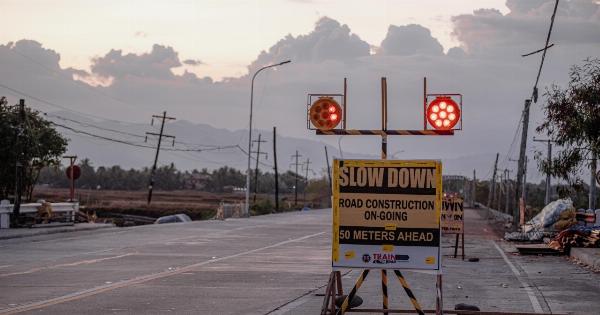Gulf Health refers to the health conditions prevalent in the countries surrounding the Arabian Gulf. This region is known for its extreme temperatures, desert landscapes, and unique cultural practices.
Unfortunately, these factors can contribute to various health issues that may require immediate treatment. Recognizing the symptoms associated with these conditions is crucial for ensuring prompt medical intervention and improving outcomes.
Heatstroke: A Life-Threatening Condition
One of the most significant health risks in Gulf countries is heatstroke. With scorching temperatures often exceeding 40 degrees Celsius (104 degrees Fahrenheit), individuals can easily become overwhelmed by the heat.
Heatstroke occurs when the body’s temperature regulation system fails, leading to a dangerously high body temperature.
Symptoms of heatstroke include:.
- High body temperature (above 40 degrees Celsius)
- Confusion and disorientation
- Hot, dry skin
- Rapid heartbeat and shallow breathing
- Nausea and vomiting
- Throbbing headache
If you or someone around you exhibits these symptoms, immediate medical attention is crucial. Untreated heatstroke can lead to organ damage, seizures, and, in severe cases, coma or death.
Sandstorm-Related Respiratory Issues
In the Gulf region, sandstorms are common during certain seasons. While these weather events may seem routine to locals, they can have adverse effects on respiratory health.
The fine particles carried by the wind can irritate the respiratory system and trigger or exacerbate conditions such as asthma, bronchitis, and allergies.
Recognizing the symptoms associated with sandstorm-related respiratory issues can aid in seeking timely medical help:.
- Shortness of breath
- Chest tightness
- Coughing and wheezing
- Runny or stuffy nose
- Sneezing
If you experience these symptoms, it is important to consult a healthcare professional. They can prescribe appropriate medications and provide guidance on minimizing exposure to sandstorms or other environmental triggers.
Dehydration: A Common Risk
The Gulf’s scorching climate, coupled with the arid desert environment, makes dehydration a common health concern.
Dehydration occurs when the body loses more fluids than it takes in, leading to an imbalance in electrolytes and impairing bodily functions.
Recognizing the signs of dehydration can help prevent complications:.
- Extreme thirst
- Dry mouth and tongue
- Dark-colored urine
- Fatigue and weakness
- Dizziness or lightheadedness
- Confusion
To prevent dehydration, it is important to drink plenty of fluids, especially water, throughout the day. Avoiding excessive exposure to the sun and practicing good hygiene can also help maintain adequate hydration.
Food Poisoning: A Risk in Hot Climates
With high temperatures, the risk of food poisoning in the Gulf region increases significantly. Bacteria grow more rapidly in warm environments, and improper storage or handling of food can lead to contamination.
Consuming contaminated food can cause severe illness and complications.
Recognizing the symptoms of food poisoning is crucial for seeking immediate medical attention:.
- Nausea and vomiting
- Abdominal pain and cramps
- Diarrhea, sometimes bloody
- Fever
- Weakness and fatigue
If you experience these symptoms after consuming food, it is important to consult a healthcare professional. Receiving timely treatment can help prevent dehydration and other complications associated with foodborne illnesses.
Heat-Related Skin Conditions
The intense heat and high humidity of the Gulf region can contribute to various heat-related skin conditions. These may include heat rash, sunburn, and fungal infections.
Identifying the symptoms of common heat-related skin conditions can aid in seeking appropriate treatment:.
- Heat rash: Small red bumps or blisters on the skin, accompanied by itching or a prickling sensation
- Sunburn: Red, painful, and tender skin that may blister or peel
- Fungal infections: Itchy, red, and scaly skin, often accompanied by a burning sensation or changes in skin color
Applying sunscreen, wearing appropriate clothing, and maintaining good personal hygiene can help prevent these conditions. If symptoms persist or worsen, it is advisable to consult a dermatologist or a healthcare professional.
Respiratory Issues from Air Pollution
Alongside sandstorms, air pollution is a growing concern in Gulf countries due to rapid urbanization and industrial development.
This pollution can pose risks to respiratory health, particularly for individuals with pre-existing conditions such as asthma or chronic obstructive pulmonary disease (COPD).
Symptoms of respiratory issues related to air pollution may include:.
- Coughing and wheezing
- Shortness of breath
- Chest pain or tightness
- Sore throat and irritated nasal passages
- Excessive mucus production
If you experience these symptoms or have a pre-existing respiratory condition that worsens, seeking medical advice is crucial. Practicing respiratory hygiene and minimizing exposure to pollutants can also help mitigate the risk.
Waterborne Diseases: A Threat to Gulf Nations
Due to the proximity to sea and frequent water-based activities, water-related diseases are also a concern in Gulf countries. Pathogens present in contaminated water sources can cause infections such as diarrhea, hepatitis A, and leptospirosis.
Recognizing the symptoms of waterborne diseases is essential for seeking appropriate treatment:.
- Diarrhea
- Nausea and vomiting
- Abdominal pain and cramps
- Jaundice (yellowing of the skin and eyes)
- Fever and chills
- Muscle aches
If you develop these symptoms after exposure to potentially contaminated water sources, consult a healthcare professional for diagnosis and treatment.
Maintaining proper hygiene and consuming safe, clean water are preventive measures against waterborne diseases.
Spider and Scorpion Bites: A Concern in Gulf Deserts
The deserts of the Gulf region are home to various species of spiders and scorpions, some of which can deliver venomous bites.
While most spider and scorpion bites are non-lethal, they can cause severe pain, discomfort, and allergic reactions in some individuals.
Recognizing the symptoms associated with spider and scorpion bites can help determine the severity and prompt appropriate action:.
- Pain, swelling, and redness at the site of the bite
- Numbness or tingling
- Muscle pain or cramping
- Headache or dizziness
- Difficulty breathing
- Increased heart rate
If you are bitten by a spider or scorpion and experience severe symptoms, it is crucial to seek immediate medical attention. Applying a cold compress or immobilizing the affected area can provide temporary relief while waiting for medical help.
Recognizing the Need for Immediate Treatment
Gulf Health encompasses a range of unique health risks that require prompt medical intervention for better outcomes.
Recognizing the symptoms associated with these conditions, such as heatstroke, sandstorm-related respiratory issues, dehydration, food poisoning, heat-related skin conditions, respiratory issues from air pollution, waterborne diseases, and spider and scorpion bites, is crucial for timely treatment and prevention of complications.
By understanding these symptoms and seeking appropriate medical help when needed, individuals in the Gulf region can prioritize their health and well-being amidst the challenges posed by the environment.





























